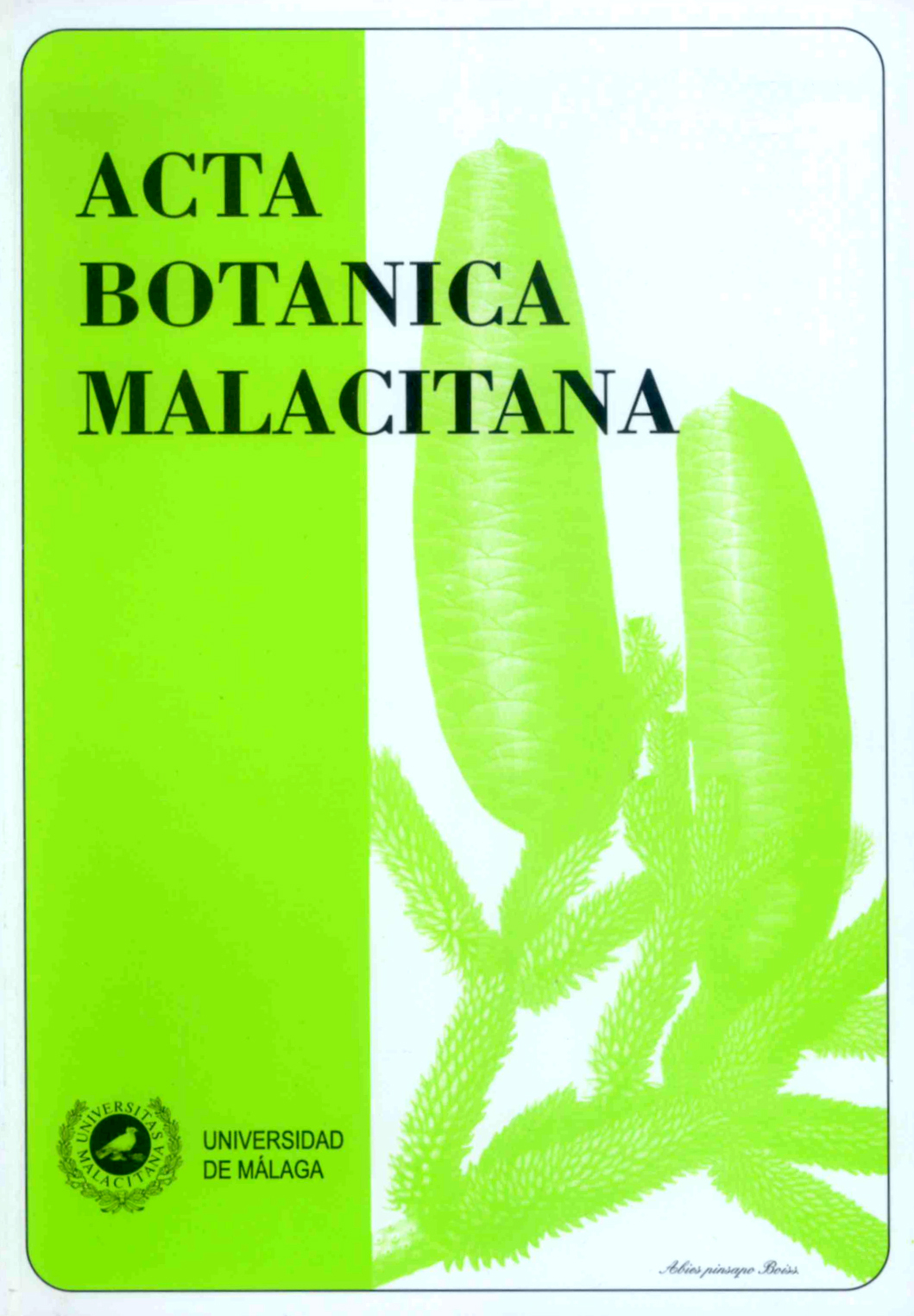Morfología, caracterización y distribución geográfica de Blechnum cordatum (Blechnaceae-Pteridophyta).
DOI:
https://doi.org/10.24310/abm.v33i0.6980Abstract
ABSTRACT. Morphology, characterization, and geographical distribution of Blechnum cordatum (Blechnaceae-Pteridophyta). Specimens of Blechnum cordatum from localities of its large geographical area were analized. The species grows in Mesoamerica, Antillas and South America, from Venezuela and Colombia to Bolivia, SE and centre of Brazil, Paraguay, Argentina, centre and S of Chile, and Juan Fernández Islands. Blechnum cordatum is a tolerant, not vulnerable species, with large sporophytes; erect, scaly rhizomes; dimorphic fronds with scaly stipes and axes; lanceolate sterile laminae with lanceolate to oblong, coriaceae, finely denticulate to serrate, superficially scaly and hairy, attached by costa (peciolulate) pinnae, with cuneate- truncate to subcordate or auriculate bases, and narrowly lanceolate fertile laminae with vegetative tissue of pinnae reduced to the portion which support the undulate to erose indusia and continuous coenosorus. Veins are free, simple, geminate and furcate, the latter ramdomly dividing at different distances from the costa, all ending in large, active hydathodes. Aerophores, located only at the base of pinnae, may be absent. Spores have a cristate-reticulate perispore with filiform, ramified processes, and a smooth to granulate exospore. Based on this study, a new description of Blechnum cordatum, and its taxonomy is presented, along with comments on affinities with other neotropical and paleotropical species of the genus.
Key words. Blechnaceae, Blechnum cordatum, morphology, taxonomy, palynology, geographical distribution.
RESUMEN. Morfología, caracterización y distribución geográfica de Blechnum cordatum (Blechnaceae-Pteridophyta). Blechnum cordatum fue estudiado en especímenes de numerosas localidades de su extensa área de distribución. Crece en Mesoamérica, Antillas, Sudamérica, desde Venezuela y Colombia a Bolivia, SE y centro de Brasil, Paraguay, Argentina, centro y S de Chile e islas de Juan Fernández. Es una especie poco vulnerable, tolerante, con esporófitos grandes, rizomas
a oblongas con pinnas coriáceas, lanceolado-oblongas, finamente denticuladas a aserradas, superficialmente escamosas y pilosas, unidas al raquis por la costa (pecioluladas), con bases cuneado- truncadas a subcordadas o auriculadas y láminas fértiles estrechamente lanceoladas con el tejido vegetativo de las pinnas reducido a la porción de la lámina que lleva el cenosoro continuo e indusio ondulado a eroso. Las venas son simples, geminadas y bifurcadas al azar a distancias variables de la costa y terminan en grandes hidatodos activos, sobresalientes o más o menos planos. Los aeróforos, presentes sólo en la base de las pinnas, pueden faltar. Las esporas son monoletas, con perisporio crestado-reticulado que lleva procesos filiformes y exosporio subliso a granulado. La especie se describe e ilustra en detalle, se actualiza su taxonomía y se comentan sus afinidades con otras especies neotropicales y paleotropicales del género.
Palabras clave. Blechnaceae, Blechnum cordatum, morfología, taxonomía, palinología, distribución geográfica.
Downloads
Metrics
Downloads
Published
How to Cite
Issue
Section
License
All information related to the licensing of published works in Acta Botanica Malacitana and copyright can be found in our Editorial Policy.







1.png)
